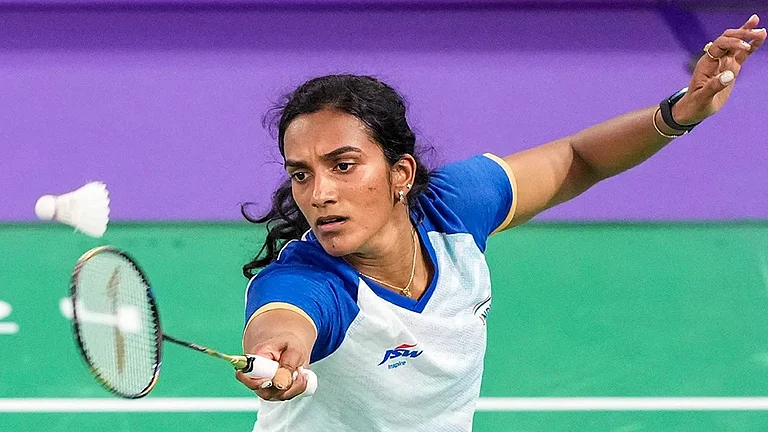IF Aitzaz Ahsan, a former home minister in Benazir Bhutto’scabinet, is to be taken seriously, Pakistan and India were separate countrieseven before 3000 BC. In his book, TheIndus Saga, he distorts history togloss over the Hindu-Muslim divide that gave birth to Pakistan. His thesis isthat the two entities always stood apart, historically, culturally and socially;partition was only a formality. The two nations, according to him, were notHindu and Muslim, as Mohammad Ali Jinnah adumbrated, but consisted of twopeoples living in the Indus region (Pakistan) and the rest of the subcontinent(India).
However dialectical Aitzaz’s approach may be, he cannot change the reality.The concept of Pakistan was posterior, not prior, to Hindu-Muslim differencesand suspicions. They had lived together in towns and villages for centuries and,to most of them, it did not matter who ruled at Delhi. It was the eventuality ofthe British departure that led to the Lahore Resolution (1940) demanding aMuslim homeland—an expression of their fears that in a united subcontinentthey’d be at the mercy of the Hindu majority.
Sir Syed Ahmed, basically a champion of Hindu-Muslim unity,had already said in his address in March 1888 that "the bigger nations willdominate the interests of the smaller nations". (He had earlier describedIndians and Muslims as two nations.) The British picked up the idea and furrowedit deep.
A fairly united defiance by Indians in 1857 made London conscious that itmust divide them if it was to stall a similar challenge again. Education inEnglish, although imparted to serve the interests of the Raj, had begun todispel the darkness of ignorance. Hindus, comparatively better off and moreeducated, had most jobs in government—and most potential for ‘mischief’.Many among them had imbibed liberal ideas from the West. Even in a limited way,they talked in terms of their own rule. Learned Muslims, small in number, werein touch with them. Even otherwise, the two communities tended to react jointlywhen it came to the British, the third party.
Against this background, the Muslim League was constituted onDecember 30, 1906, in Dhaka to "foster a sense of loyalty to the Britishgovernment among the Muslims of India" and to advance the claims of Muslimsvis-a-vis other communities. The leaders of the Muslim League felt that if theyjoined any Congress movement, the British would not support their claims forspecial treatment in education and service. Whatever else might have been theeffect of the League’s creation, it set most Muslims thinking that theirinterests were not the same as those of Hindus. From then onwards, there couldbe a Hindu-Muslim alliance but not a united national movement. And when communalelectorates were introduced in 1909, unity became still more difficult.
Jinnah,who joined the League in 1913, spoke more or less the same language as the Congress and was considered the bestambassador of Hindu-Muslim unity. And he had the League bury its differenceswith its "Hindu friends" at a conference in Bombay on December 30,1915, in the presence of three Congress leaders, including Mahatma Gandhi. A fewmonths later, in April 1916, Jinnah had a joint committee of the Congress andthe Muslim League constituted to discuss "the irreducible minimum"reforms they should demand from the government. He appealed to the Hindus toagree to the Muslims’ demand for separate electorates to win their"confidence and trust".
Till then the Congress had not accepted communal electoratesformally. Almost as if he was not himself convinced of the merits of his demand,Jinnah rationalised: "The demand for separate electorates is not a matterof policy but a matter of necessity to the Muslims who require to be roused fromthe coma and torpor into which they have fallen for so long." Soon after,the Congress responded to Jinnah’s appeal and agreed to "guarantee"in certain provinces in which the Muslims were a minority "a proportion ofseats in the future legislative councils in excess of the number they couldotherwise hope to win". This was the Lucknow Pact, and this may well havesown the seed of the two-nation theory.
The atmosphere of amity generated by the Lucknow Pact,however, did not last long. In 1918,there were widespread Hindu-Muslim riots. The gulf between the two communitieswidened. Gandhi temporarily retrieved the situation by forging Hindu-Muslimunity over the Khilafat Movement (1920). Though Jinnah was opposed to theKhilafat Movement and was unhappy to see politics "intertwined withreligion", he had not yet reached the point of no return.
And there flickered some hope of unity when in 1928 theCongress drafted a constitution for India, known as the Nehru Report (namedafter Motilal Nehru). The report rejected separate electorates but favouredreservation of seats for Muslims at the Centre and in the provinces in whichthey were in a minority. "A minority must remain a minority whether anyseats are reserved for it or not," the Report said.
Jinnah’s alternative was a 14-point plan: one-third of theseats in the Central legislature for the Muslims; reservation of posts in theservices; and the rejection of any legislation if three-fourths of the membersof any community in a House opposed it. This was too bitter a pill for theCongress and it stuck to the Nehru Report. The two sides began drifting apart.Jinnah warned that if the minorities felt insecure, the inevitable result wouldbe "revolution and civil war".
Jinnah’s forebodings did not deter the Congress fromintensifying its campaign for independence. Scores of Muslims, known asnationalist Muslims, joined the freedom movement. But the majority of them keptaloof. The gap between the development of the Hindus who had taken advantage ofEnglish education and western thought and of the Muslims, who had not, widened.The separatist policy of the British began to take its toll. But probably, themain factor was that Indian nationalism had a Hinduised look because themajority of the freedom fighters were Hindus.






















